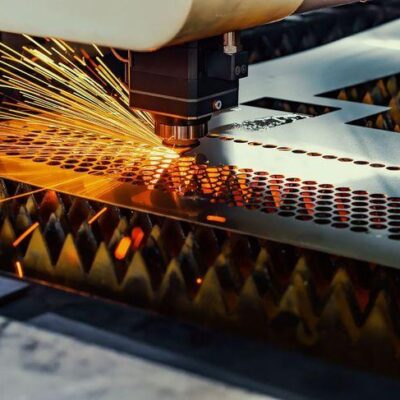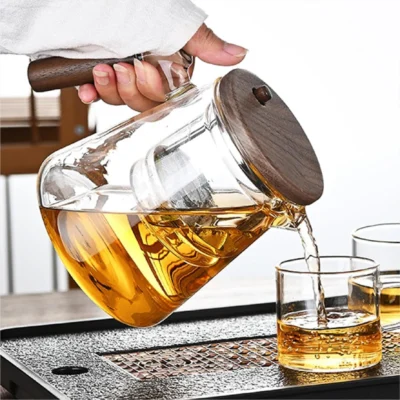When you think about an engine, you might immediately picture pistons, spark plugs, or even the timing belt. But there are many small components working tirelessly behind the scenes to keep your engine running smoothly. One such critical part is the valve guide.
Although often overlooked, the valve guide plays an essential role in engine performance, longevity, and efficiency. In this blog, we will dive deep into what a valve guide is, its importance, materials, signs of wear, maintenance, and replacement procedures.
What Exactly Is a Valve Guide?
A valve guide is a cylindrical sleeve or bushing embedded inside the engine’s cylinder head. Its main function is to guide the valve stem as it moves up and down. By doing so, it ensures that the valves open and close accurately and align perfectly with the valve seat.
In simple terms, think of the valve guide as a precise track for the valve stem, allowing smooth and stable movement. Without it, valves could wobble, causing misalignment and inefficient combustion.
Why Is the Valve Guide So Important?
The importance of the valve guide cannot be overstated. Here’s why:
- Maintains Valve Alignment: The valve guide keeps the valve stem moving linearly, preventing it from tilting or wobbling, which could cause improper sealing.
- Prevents Valve Stem Wear: By supporting the valve stem, the guide reduces lateral forces and friction, prolonging valve life.
- Supports Efficient Combustion: Proper valve movement and sealing ensure efficient intake of air-fuel mixture and exhaust gas expulsion, improving combustion and engine power.
- Controls Oil Consumption: The valve guide also acts as a seal, minimizing oil leakage from the cylinder head into the combustion chamber.
- Assists in Heat Dissipation: Certain valve guide materials help conduct heat away from the valve stem to the cylinder head, protecting the valve from overheating.
Valve Guide Materials: What Are They Made Of?
Because valve guides must withstand high temperatures, friction, and mechanical stress, they are made from durable materials, including:
- Cast Iron: Most common due to its durability and resistance to wear. It is the standard choice in many conventional engines.
- Bronze: Used mainly in high-performance or heavy-duty engines for its excellent thermal conductivity, which helps in dissipating heat.
- Steel or Hardened Steel: Employed in some applications requiring superior strength.
- Composite or Powdered Metal Alloys: Modern engines sometimes use advanced composite materials to reduce weight and improve performance.
Each material impacts the valve guide’s performance, wear resistance, and heat management capabilities.
Symptoms of a Worn Valve Guide
Like any engine part, valve guides can wear out or get damaged over time. Recognizing worn valve guides early can save you from expensive repairs. Here are some common symptoms:
- Blue Smoke From Exhaust: If oil leaks past the valve guide into the combustion chamber, it burns and produces blue smoke from the exhaust. This is often a clear sign of valve guide wear.
- Increased Oil Consumption: Leaking oil past the valve guide can cause the engine to consume oil faster than normal.
- Rough Engine Idle or Misfires: A worn valve guide can cause the valve to not seat properly, resulting in misfires or rough idling due to improper combustion.
- Ticking or Tapping Noise: Loose valve stems in worn guides can cause tapping or ticking noises coming from the cylinder head area.
- Loss of Engine Power: Improper valve sealing caused by worn guides can reduce engine compression, leading to decreased power and performance.
How Is Valve Guide Wear Diagnosed?
Diagnosing valve guide wear typically involves:
- Visual inspection during engine overhaul or cylinder head removal.
- Measuring valve stem clearance using specialized tools.
- Checking for excessive valve movement.
- Inspecting for oil leakage or carbon buildup around the valve stem.
Valve Guide Maintenance and Longevity Tips
Valve guides generally last a long time, but you can prolong their life by following these tips:
- Regular Engine Oil Changes: Clean oil reduces friction and wear inside the valve guides.
- Use Quality Fuel and Lubricants: Prevents carbon deposits that can damage guides.
- Engine Tune-Ups: Regular servicing helps catch valve guide issues early.
- Avoid Engine Overheating: Excess heat accelerates valve guide wear.
Valve Guide Replacement: What’s Involved?
Replacing valve guides is a delicate process best handled by skilled mechanics. The general steps include:
- Cylinder Head Removal: The cylinder head is taken off the engine for access.
- Valve and Spring Removal: Valves, springs, and retainers are removed.
- Valve Guide Removal: The worn guides are pressed or driven out.
- Valve Seat Inspection: Valve seats may be inspected or reconditioned.
- Installing New Guides: New valve guides are pressed in, ensuring correct alignment and fit.
- Valve Reassembly: Valves, springs, and retainers are reinstalled, and the cylinder head is mounted back.
It’s essential to use the correct tools and maintain precision to avoid damage.
How Does the Valve Guide Affect Engine Performance?
The valve guide has a direct impact on several performance factors:
- Compression: Proper valve seating ensures maximum compression.
- Fuel Efficiency: Efficient combustion means better fuel economy.
- Emissions: Reduced oil leakage helps lower harmful emissions.
- Engine Longevity: Less wear and tear on valves extends engine life.
In high-performance or racing engines, precise valve guides are even more critical for maintaining optimal valve timing and engine output.
Conclusion
The valve guide may be a small part, but it has a huge impact on engine health and performance. By guiding valve movement precisely, it ensures efficient combustion, reduces wear, and helps keep oil consumption under control.
Paying attention to valve guide condition during engine maintenance can save you from costly repairs and keep your vehicle running smoothly for years. Whether you are a car owner, mechanic, or engineering enthusiast, understanding the valve guide’s role is key to appreciating how engines work.





